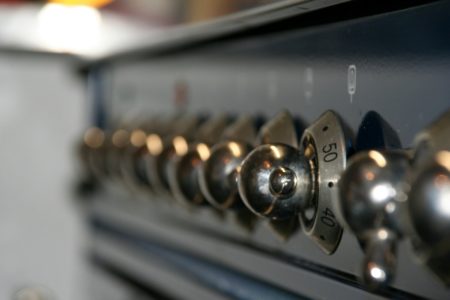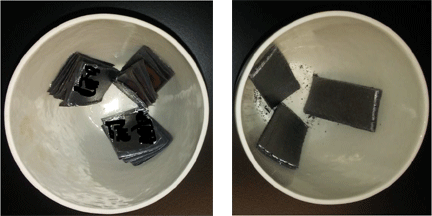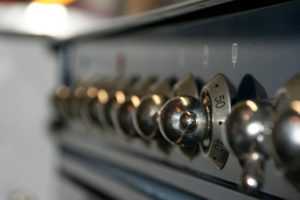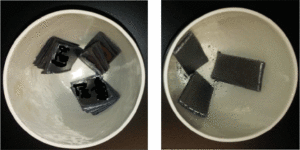 This is the fifth installment of our “Why Do I Care” series. Every so often, we’ll blog about some of the questions people new to the gasket industry may be looking for more information about. Click the links below to read the first four installments:
This is the fifth installment of our “Why Do I Care” series. Every so often, we’ll blog about some of the questions people new to the gasket industry may be looking for more information about. Click the links below to read the first four installments:
- What Is Compressibility & Recovery, and Why Do I Care?
- What Is Bolt Load, and Why Do I Care?
- What Is Creep Relaxation, and Why Do I Care?
- What Is Ignition Loss, and Why Do I Care?
This week, we’re going to talk about air aging as it relates to your gaskets and gasket material, and why it is important. Air aging is similar to ignition loss in the fact that there is interest in the weight loss of a material at elevated temperatures, but the similarities really stop there. So, what is air aging?
Air Aging
 The purpose of air aging is to observe both the weight change and the change in thickness of a finished material. If the test is done per ASTM D-573, the material is typically placed in a furnace for 70 hours at 1000°F. However, you could also test at a temperature that is of particular interest to your application. In general, the intent is to determine how the material retains its properties after temperature exposure. As you can imagine, some materials will dry out and get brittle when exposed to heat. This is the intent of the test, to verify in a basic format, if the material is acceptable for the joint chosen. The tests for indicators for this can include: weight change, thickness change, compressibility, recovery, flexibility, and delamination depending on the material. Data points are gathered before and after to determine the change. The material or application engineer can then decide if the material is adequate for the gasket.
The purpose of air aging is to observe both the weight change and the change in thickness of a finished material. If the test is done per ASTM D-573, the material is typically placed in a furnace for 70 hours at 1000°F. However, you could also test at a temperature that is of particular interest to your application. In general, the intent is to determine how the material retains its properties after temperature exposure. As you can imagine, some materials will dry out and get brittle when exposed to heat. This is the intent of the test, to verify in a basic format, if the material is acceptable for the joint chosen. The tests for indicators for this can include: weight change, thickness change, compressibility, recovery, flexibility, and delamination depending on the material. Data points are gathered before and after to determine the change. The material or application engineer can then decide if the material is adequate for the gasket.
Sometimes, you don’t even need data to tell that a material did not perform well in the test. Here are two actual pictures from an air aging test recently performed in our lab. The material on the left is a competitor’s, and you can see how all of the layers have separated as a result of the heat. The material on the right is a Metal Tech grade. It is clear that it has retained its integrity and not peeled apart or delaminated when subjected to the same heat.
What To Do With It
As with any lab test, it is important to remember that the results that you obtain in a laboratory environment are not necessarily what you will see in the actual application, but they are a pretty good indication of whether or not you are on the right track with a material. The better a material performs in a lab, the higher level of confidence you will have of the performance in the application.
How much attention do you pay to air aging results? If you are interested in subscribing to Sealed-In’s blog posts, email sales@mtigasket.com.

This is the fifth installment of our “Why Do I Care” series. Every so often, we’ll blog about some of the questions people new to the gasket industry may be looking for more information about. Click the links below to read the first four installments:
- What Is Compressibility & Recovery, and Why Do I Care?
- What Is Bolt Load, and Why Do I Care?
- What Is Creep Relaxation, and Why Do I Care?
- What Is Ignition Loss, and Why Do I Care?
This week, we’re going to talk about air aging as it relates to your gaskets and gasket material, and why it is important. Air aging is similar to ignition loss in the fact that there is interest in the weight loss of a material at elevated temperatures, but the similarities really stop there. So, what is air aging?
Air Aging
The purpose of air aging is to observe both the weight change and the change in thickness of a finished material. If the test is done per ASTM D-573, the material is typically placed in a furnace for 70 hours at 1000°F. However, you could also test at a temperature that is of particular interest to your application. In general, the intent is to determine how the material retains its properties after temperature exposure. As you can imagine, some materials will dry out and get brittle when exposed to heat. This is the intent of the test, to verify in a basic format, if the material is acceptable for the joint chosen. The tests for indicators for this can include: weight change, thickness change, compressibility, recovery, flexibility, and delamination depending on the material. Data points are gathered before and after to determine the change. The material or application engineer can then decide if the material is adequate for the gasket.
Sometimes, you don’t even need data to tell that a material did not perform well in the test. Here are two actual pictures from an air aging test recently performed in our lab. The material on the left is a competitor’s, and you can see how all of the layers have separated as a result of the heat. The material on the right is a Metal Tech grade. It is clear that it has retained its integrity and not peeled apart or delaminated when subjected to the same heat.
What To Do With It
As with any lab test, it is important to remember that the results that you obtain in a laboratory environment are not necessarily what you will see in the actual application, but they are a pretty good indication of whether or not you are on the right track with a material. The better a material performs in a lab, the higher level of confidence you will have of the performance in the application.
How much attention do you pay to air aging results? If you are interested in subscribing to Sealed-In’s blog posts, email sales@mtigasket.com.

This is the fifth installment of our “Why Do I Care” series. Every so often, we’ll blog about some of the questions people new to the gasket industry may be looking for more information about. Click the links below to read the first four installments:
- What Is Compressibility & Recovery, and Why Do I Care?
- What Is Bolt Load, and Why Do I Care?
- What Is Creep Relaxation, and Why Do I Care?
- What Is Ignition Loss, and Why Do I Care?
This week, we’re going to talk about air aging as it relates to your gaskets and gasket material, and why it is important. Air aging is similar to ignition loss in the fact that there is interest in the weight loss of a material at elevated temperatures, but the similarities really stop there. So, what is air aging?
Air Aging
The purpose of air aging is to observe both the weight change and the change in thickness of a finished material. If the test is done per ASTM D-573, the material is typically placed in a furnace for 70 hours at 1000°F. However, you could also test at a temperature that is of particular interest to your application. In general, the intent is to determine how the material retains its properties after temperature exposure. As you can imagine, some materials will dry out and get brittle when exposed to heat. This is the intent of the test, to verify in a basic format, if the material is acceptable for the joint chosen. The tests for indicators for this can include: weight change, thickness change, compressibility, recovery, flexibility, and delamination depending on the material. Data points are gathered before and after to determine the change. The material or application engineer can then decide if the material is adequate for the gasket.
Sometimes, you don’t even need data to tell that a material did not perform well in the test. Here are two actual pictures from an air aging test recently performed in our lab. The material on the left is a competitor’s, and you can see how all of the layers have separated as a result of the heat. The material on the right is a Metal Tech grade. It is clear that it has retained its integrity and not peeled apart or delaminated when subjected to the same heat.
What To Do With It
As with any lab test, it is important to remember that the results that you obtain in a laboratory environment are not necessarily what you will see in the actual application, but they are a pretty good indication of whether or not you are on the right track with a material. The better a material performs in a lab, the higher level of confidence you will have of the performance in the application.
How much attention do you pay to air aging results? If you are interested in subscribing to Sealed-In’s blog posts, email sales@mtigasket.com.

